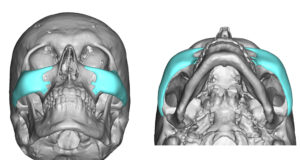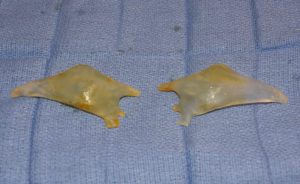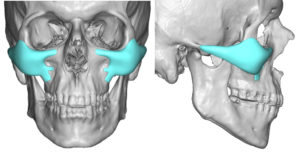Cheek implants come in a variety of standard styles and sizes. While such midface implant options have been around for decades, they are not right for every patient’s aesthetic needs for both genders. In addition contemporary trends are seeing a shift in the type of midface augmentation results that some patient’s seek.
Broader cheek coverages that extend back along the zygomatic arches create a stronger and more defined cheek augmentation effect. Such cheek implant styles do not currently exist and such implants have to be custom made based on the patient’s 3D CT scan. Such implants, while often called ‘model cheek implants, are anatomically known as cheek-arch style implants.
Such custom cheek implants create their more profound effects because of the larger bony and non-bony surface area that they cover. But with bigger implant coverage the risk that is most common in this area of the face with aesthetic augmentation, asymmetry of implant placement, is more likely to occur. The long extended arch of the implant magnifies any slight rotation of its placement through the limited intraoral access that is used for insertion.


Dr. Barry Eppley
Indianapolis, Indiana



